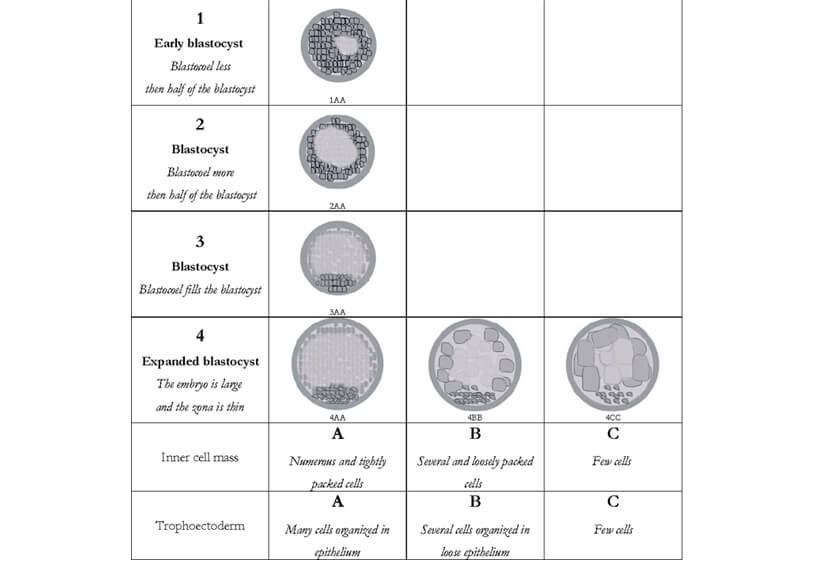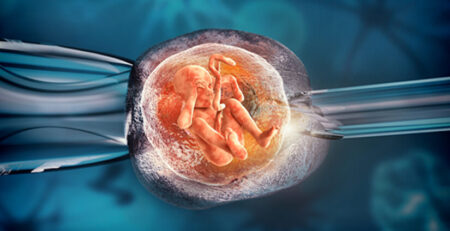Embryo Grading and Success Rates
In Vitro Fertilization (IVF) is a world where science and hope combine to create a new life. The IVF procedure not only involves fusing the egg with sperm to make an embryo in the lab but also monitoring the growth and selecting the best embryo for transfer in the female body to result in pregnancy. Hence it becomes very important that this embryo selection process is done very meticulously.
Embryo grading assesses embryo quality so that the fertility specialists can select the optimal embryo for a healthy pregnancy. But do you know how this grading is done and how it impacts the IVF treatment success rate? Let’s explore.
Embryo Formation and Development
First, we will understand how embryos form and develop in IVF treatment.
The journey of embryo development in IVF treatment starts with the fertilization of an egg by sperm in a controlled laboratory setting. First of all, fertility medications are given to the woman to encourage the ovaries to produce multiple eggs. Once the eggs have matured, they are gently aspirated with a thin needle guided by ultrasound. Now, these eggs are mixed with sperm for fertilization.
After fertilization, the embryo goes through several stages.
Fertilized State: At this stage, the egg fuses with the sperm and form zygote.
Cleavage State (Day 3): Once fertilization occurs, the eggs begin to divide and develop. On the third day, these tiny microscopic cells will start dividing repeatedly, reaching the cleavage stage (4-8 cell stage). At this stage, the embryologist will evaluate the embryo based on cell number, symmetry of cell division, and degree of fragmentation.
Blastocyst Stage (Day 5): Around day 5, the embryo transforms into a complex structure known as a blastocyst, which resembles a hollow ball with two distinct sections: the inner cell mass (ICM), which will eventually form the fetus and the trophoblast (a thin layer of cells that aids in implantation and placental development).
Embryo Grading System
Now, let’s see how embryo grading is done to choose an embryo to enhance your chances of a successful pregnancy.
Day 3 Grading
When the embryo reaches day 3, known as the cleavage stage, it divides rapidly but maintains its size as an unfertilized egg. Despite the uniform size, an embryo divides into different numbers of cells, ranging from 2 to 8 cells, including intermediates like 3, 5, and 6 cells.
During this cleavage stage, the inner part of the cell is sometimes excluded from the new cells. These components of the embryo are known as fragments, which lack genetic material (DNA). This fragmentation may affect the appearance of the embryo, grading and pregnancy potential.
So, day 3 is graded as A, B, and C based on the number of cells, their appearance and size, and presence of fragmentation. The following table can help you to understand it better.
| Grade | No. of Cells | Appearance of Cells | Fragmentation | Live Birth Rate |
| A | 7-9 | Uniform size | Less than 10% | 40-50% |
| B | 6-7 | Slightly uneven | 10-25% | 30-40% |
| C | Less than 6 | Uneven sized | More than 25% | 15-25% |
Day 5 Grading
If we talk about day 5 embryo grading, several components and characteristics of the embryo need to be considered to enhance the IVF success rates. Day five embryos continue to divide, and the number of cells increases; this stage is called a blastocyst. During the blastocyst stage, cells begin to differentiate into two sections: one is the inner cell mass (ICM), and the other is the Trophectoderm Epithelium (TE).
So, the blastocyst grading is done based on blastocyst expansion, inner cell mass, and trophectoderm epithelium quality. Let’s get a better understanding with the help of the following tables.
- Blastocyst Expansion
| Blastocyst Grade | Blastocyst Stage | Description |
| Grade 1 | Early Blastocyst | Blastocoel’s (a fluid-filled cavity) volume is less than half that of the embryo. |
| Grade 2 | Blastocyst | The volume of the blastocyst cavity is more than or equivalent to half the volume of the embryo. |
| Grade 3 | Full Blastocyst | The blastocoel completely fills the embryo. |
| Grade 4 | Expanded Blastocyst | The blastocyst cavity is more than the early embryo, and the surrounding membrane is thinning. |
| Grade 5 | Hatching Blastocyst | The outer layer of cells had begun to rupture through the surrounding membrane. |
| Grade 6 | Hatched Blastocyst | The blastocyst has fully ruptured. |
- Inner Cell Mass (ICM)
Based on inner cell mass quality, the embryos are graded on a scale of A, B, and C. A grade indicates the highest quality, and a C signifies the poor embryo quality.
| Grade | Description |
| A | Many closely packed and well-defined cells with a high potential for implantation |
| B | Few loosely packed cells with uneven thickness |
| C | Very few disorganised cells |
- Trophectoderm Epithelium (TE)
Trophectoderm Epithelium is also graded as A, B and C based on quality.
| Grade | Description |
| A | Many tightly, forming a tightly bound epithelium. |
| B | Few cells, loosely packed |
| C | Very few cells, forming a loose epithelium |
Here is an interesting fact. Not every embryo develops into a blastocyst within 5 or 6 days. Some of them grow very slowly.

Methods of embryo scoring in in vitro fertilisation: March 2004
Impact of Grading on IVF Success Rates
If we are talking about the IVF journey, blastocysts that are well-developed with an A-grade or B-grade TE and an A-grade ICM, the chances of pregnancy would be higher.
According to a study, when a normal embryo was transferred, it was observed that the quality of blastocysts indeed has a significant correlation with the likelihood of achieving pregnancy. To make it easier to understand how embryo grading relates to IVF success rates, let’s look at the table below.
| Embryo Quality | Embryo Grade | Pregnancy Rate | Live Birth Rate |
| Excellent | 3AA, 4AA, 5AA | 65% | 50% |
| Good | 3AB, 4AB, 5AB, 6AB, 4BA, 5BA, 6BA | 55% | 40% |
| Average | 3BB, 4BB, 5BB, 6BB | 30% | 20% |
| Poor | 4BC, 5BC, 6BC, 4CB, 5CB, 6CB | 10% | 5% |
What is The Best Grade for An Embryo for IVF?
Now, you might be wondering if embryo grading really matters. Of course, yes. The above data reveals that embryos with an AA grade (3AA, 4AA, 5AA) have the highest chance of pregnancy. Those graded as AB or BA (3AB, 4AB, 5AB, 6AB, 3BA, 4BA, 5BA, 6BA) exhibit a reduced pregnancy rate.
But here is a thing. While good grade embryos are often considered to have greater implantation rates and promising IVF success rates, some average grade embryos can still result in healthy pregnancies.
Early Stage Embryo Transfer
If you are considering IVF treatment, you might wonder what happens if embryo number is less and they might not reach the blastocyst stage (Day 5) or attain high embryo quality. Don’t worry, in such a scenario, your doctor would probably decide for transfer of Day 3 or Day 4 embryo. These early bloomers are not fully developed yet, but they have the capability to grow into full blastocysts once they are placed in more natural conditions like in the female body. In certain conditions of poor egg reserve, poor response, low AMH, your doctor may advise Embryo Pooling. Despite this, if repeatedly the embryo quality is poor due to egg, IVF centre in Delhi might advise you to go for donor eggs from healthy young donors.
Summing Up!
Embryo grading is a significant component of the IVF process, offering valuable insights into embryo quality and potential for success. Remember, while not every excellent grade embryo leads to pregnancy, and not every poor-grade embryo is out of the race, understanding the role of embryo grading can provide clarity. If you are considering IVF treatment, schedule your consultation with Dr Rhythm Gupta and reveal the path toward achieving your dream of parenthood.





